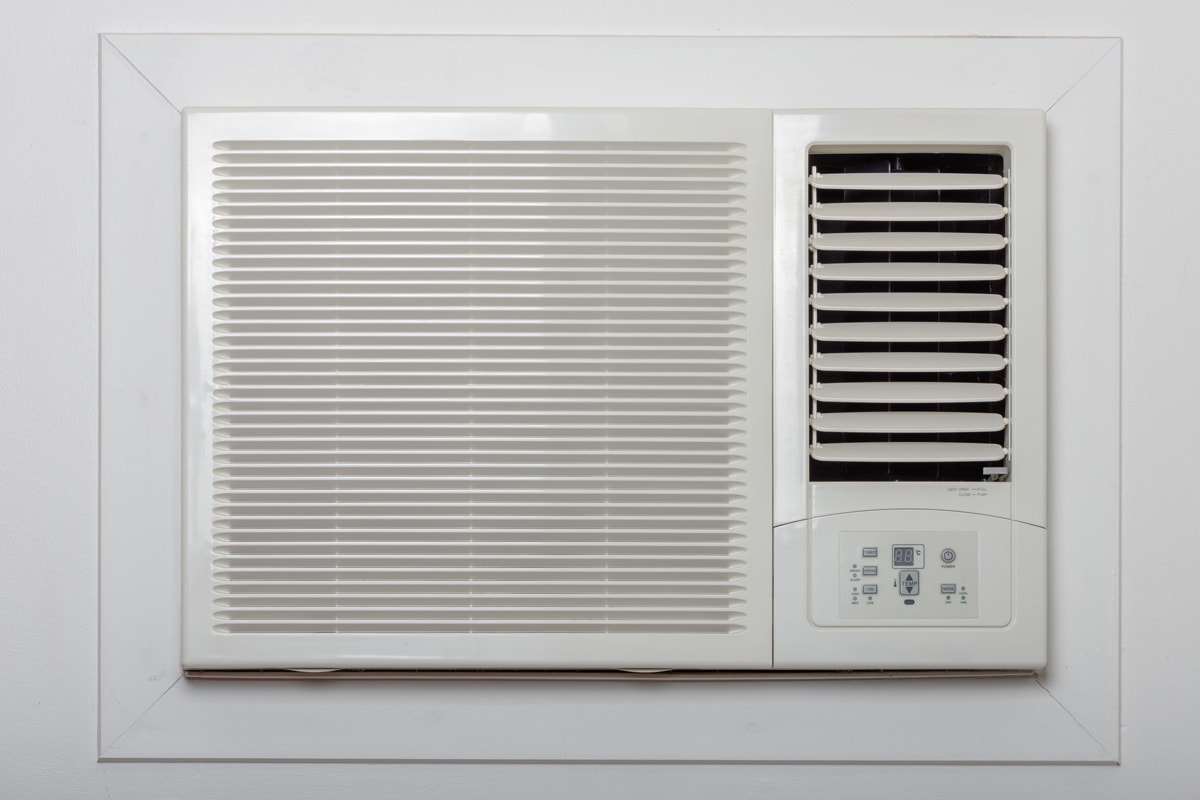The temperature of a room can be quite noticeable, especially if you spend a lot of time there. So how large should a room be if the air conditioner measures 5,000 BTUs? How do you measure BTUs? Sit back and read on! We've researched the answers to these questions for you.
If the air conditioner has a capacity of 5,000 BTUs, then it's suitable for as much as 250 square feet of area. This also means that the air conditioner has a cooling capacity of 0.42 to 0.5 tons per unit.
By the end of this article, you'll understand just how much of an area 5,000 BTUs can reach. We'll provide you with a step-by-step computation and discuss what to do about your own air conditioner. You will also learn the significance of sizing air conditioners. We're excited to share more with you, so read on!

What Is the Room Size for 5,000 BTU?

The BTU pertains to the energy required to increase the water temperature by one degree Fahrenheit. Also, 12,000 BTUs is equal to one ton unit. This shows the cooling capacity of an AC to cover up to 600 square feet per hour. Check out this equation:
600 square feet = 1 ton = 12,000 BTU
You can see that the equations are interchangeable. We can say that 12,000 BTUs are equal to 600 square feet, and so on.
Since the given data in our problem is 5,000 BTUs, and we should find out the area, we need to calculate how many BTUs are in one square foot. The calculation will look like this:
BTU per sq. ft. = 12,000 BTU ÷ 600 sq. ft.
= 20 BTU per sq. ft.
Based on the calculation, it turns out that there are 20 BTUs in every square foot. We can substitute the values to find the area in 5,000 BTUs. Check out the solution below:
Area = Given BTU ÷ 20 BTU per sq. ft.
= 5,000 ÷ 20
= 250
Therefore, 5,000 BTUs can cover an area of 250 square feet.
What Is the Tonnage for 5,000 BTU?
Tonnage, or the AC's cooling capacity, can be found by dividing BTUs by 12,000. Tonnage is significant for finding out what type of AC you can install in an area. See the solution below for finding the tonnage:
Tonnage = Given BTU ÷ 12,000 BTU
= 5,000 ÷ 12,000
= 0.42
So the tonnage for 5,000 BTUs is 0.42. This shows that you can use an AC with the closest tonnage to 0.42, which is 0.5. This is because most manufacturers do not make exact tonnage such as 0.42.
You can find the tonnage of an AC on the product's information tag. However, it will depend on the manufacturer. Some of them use BTUs rather than tonnage.

Can You Use Higher Tonnage in a Small Room?
It's not recommended to use an AC with a very high cooling capacity in a small room, except if the difference between the tonnage and the area is close enough.
For instance, we chose a 0.5-ton unit instead of a 1-ton unit for an area of 250 square feet. This is simply because a 0.5-ton is good for 300 square feet, while a 1-ton is for 600 square feet. We can see that 300 is the closest number to 250, rather than 600 to 250. To understand how we found the area, look at the solution below:
Area = Tonnage x 600 sq. fr.
If we try to compute the area for a 0.5-ton unit, we will have an answer of 300, as shown below:
Area = 0.5 x 600 sq. ft.
= 300 sq. ft.
If we substitute a 1-ton unit, we will get a value of 600:
Area = 1 x 600 sq. ft.
= 600 sq. ft.
We can see that 0.5-ton gives us a value of 300, which is closest to 250. While 1-ton unit has a value of 600 that is farther from 250. Therefore, you should use a 0.5-ton unit instead of a 1-ton unit to cover an area of 250 square feet in case you can't find an AC with exactly 5,000 BTUs.

What Are the Qualities of a 5,000 BTU Air Conditioner?
The first thing that may come to mind when you hear about a 5,000 BTU air conditioner is that it's small and portable. Well, you're right. AC units like this are mostly for windows and indoor spaces, making them easy to move from one place to another.
To learn more about 5,000 BTU AC units, we will cover some of their qualities. Check out the list below.
Suitable for Small Rooms
As mentioned earlier, these units are good for small rooms that measure around 250 square feet or less. You can cool down the room temperature faster unlike if you use it for larger rooms.
Reduced Power Consumption
Since the area requirement of this kind of AC is small, you can expect smaller bills for the power consumption. You can save a lot of money in the long run.
A 5,000 BTU AC usually consumes an average of 450 watts during operation. This is lower than most medium-sized AC units that consume around 900 watts.
Easy to Monitor
It's a lot easier to monitor this kind of AC compared to bigger models that have two units for indoors and outdoors. This is because you can see the entire unit in one place.
With a 5,000 BTU AC, all the internal components are complete, from the evaporator to the condenser and other primary motors. So you don't have to set up an outdoor unit.
Is a 5,000 BTU AC Safe for Pets?
Yes, this type of AC unit is safe for pets. Keep in mind that anything that's safe for you will also be safe for your pets. The unit may require some adjustment to a temperature range of 69-72 degrees Fahrenheit. This is to protect pets from hot temperatures.

How to Stop a 5,000 BTU AC From Vibrating
Most 5,000 BTU AC units are window-type, meaning you can mount them on the window between the room and the outside space.
An AC unit that vibrates is usually caused by the compressor during the flow of refrigerant throughout the entire unit. The vibration can also be due to the fan motor or any internal parts that hit against each other.
You can use a drill and screws to fix this issue.
Such vibration is annoying and can be very noisy, but you can fix it in a few steps. Below are the instructions for fixing the vibration on a window-type AC.
- Most window AC units have a predrilled hole on the top. Insert screws into these holes and secure them with a drill.
- If there are gaps on the side between the window and the AC, you can fit in some insulation to keep the AC stable.
- After the following these steps, the vibrations should stop. Otherwise, you may need a technician to inspect the internal motors of the AC.
Watch this short clip to find out how to fix the vibration in a window-unit AC:
https://m.youtube.com/watch?start=06&end=103&v=hg0Jw-NLUnw&feature=youtu.be
When to Turn the AC Off?
It's important to plan when you'll need to turn off the air conditioner. This can prevent overuse that may lead to early failure of internal components like the condenser fan. We're sharing some ideas with you as to when you should shut the AC off.
When You're Away
It's logical to shut down the AC when you're away from home for several days. This will help reduce your bills and contribute to the environment by conserving energy.
However, the AC may take longer to cool your house down when you come back. The AC needs to push out the hot air that settled in your home during the time you were away.
If the Temperature Is Sufficient
If the temperature is cool enough, you can save money on electricity by turning off the air conditioner, especially at night. This also allows the AC to rest for a few hours until you have to make the temperature comfortable again.
You should use a circulator fan if you turn off the AC in order to stay comfortable and keep the air circulating.
See this circulator fan on Amazon.
In Closing
We covered a lot of useful information in this article. We found out that the room size for 5,000 BTUs is 250 square feet, which has a tonnage requirement of 0.42 to 0.5. We shared with you how to calculate the area for the BTUs, and we also covered the qualities of a 5,000 BTU air conditioner.
We also discussed how to fix a vibrating 5000 BTU AC and when to turn your AC off. Remember to keep the temperature comfortable for you and your pets.
We hope you enjoyed reading! Check out these articles for more information:


